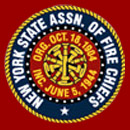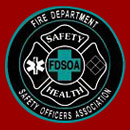|
| Web Counters |
Website Visitors
Since
April 2, 2007
|
Visitors Today
Jun 14, 2025
|
|
| 2025 Incidents |
| Jan | 40 |
| Feb | 29 |
| Mar | 27 |
| Apr | 28 |
| May | 40 |
| Jun | |
| Jul | |
| Aug | |
| Sep | |
| Oct | |
| Nov | |
| Dec | |
| Total | 164 |
| 2024 Incidents |
| January | 28 |
| February | 35 |
| March | 37 |
| April | 38 |
| May | 46 |
| June | 39 |
| July | 31 |
| August | 38 |
| September | 46 |
| October | 39 |
| November | 35 |
| December | 37 |
| Total | 449 |
| We are proud members of the following organizations: |
| |
 |
 |
 |
 |
|
|
|
|
Here's what you can do to prepare for such an emergency.
Know What Hurricane WATCH and WARNING Mean
- WATCH: Hurricane conditions are possible in the specified area of the WATCH, usually within 36 hours.
- WARNING: Hurricane conditions are expected in the specified area of the WARNING, usually within 24 hours.
Prepare a Personal Evacuation Plan
- Identify ahead of time where you could go if you are told to evacuate. Choose several places--a friend's home in another town, a motel, or a shelter.
- Keep handy the telephone numbers of these places as well as a road map of your locality. You may need to take alternative or unfamiliar routes if major roads are closed or clogged.
- Listen to NOAA Weather Radio or local radio or TV stations for evacuation instructions. If advised to evacuate, do so immediately.
- Take these items with you when evacuating:
- Prescription medications and medical supplies;
- Bedding and clothing, including sleeping bags and pillows
- Bottled water, battery-operated radio and extra batteries, first aid kit, flashlight
- Car keys and maps
- Documents, including driver’s license, Social Security card, proof of residence, insurance policies, wills, deeds, birth and marriage certificates, tax records, etc.
Assemble a Disaster Supplies Kit Including the Following Items:
- First aid kit and essential medications.
- Canned food and can opener.
- At least three gallons of water per person.
- Protective clothing, rainwear, and bedding or sleeping bags.
- Battery-powered radio, flashlight, and extra batteries.
- Special items for infants, elderly, or disabled family members.
- Written instructions on how to turn off electricity, gas and water if authorities advise you to do so. (Remember, you'll need a professional to turn them back on.)
Prepare for High Winds
- Install hurricane shutters or purchase precut 1/2" outdoor plywood boards for each window of your home. Install anchors for the plywood and predrill holes in the plywood so that you can put it up quickly.
- Make trees more wind resistant by removing diseased and damaged limbs, then strategically removing branches so that wind can blow through.
Know What to Do When a Hurricane WATCH Is Issued
- Listen to NOAA Weather Radio or local radio or TV stations for up-to-date storm information.
- Prepare to bring inside any lawn furniture, outdoor decorations or ornaments, trash cans, hanging plants, and anything else that can be picked up by the wind.
- Prepare to cover all windows of your home. If shutters have not been installed, use precut plywood as described above. Note: Tape does not prevent windows from breaking, so taping windows is not recommended.
- Fill your car's gas tank.
- Recheck manufactured home tie-downs.
- Check batteries and stock up on canned food, first aid supplies, drinking water, and medications.
Know What to Do When a Hurricane WARNING Is Issued
- Listen to the advice of local officials, and leave if they tell you to do so.
- Complete preparation activities.
- If you are not advised to evacuate, stay indoors, away from windows.
- Be aware that the calm "eye" is deceptive; the storm is not over. The worst part of the storm will happen once the eye passes over and the winds blow from the opposite direction. Trees, shrubs, buildings, and other objects damaged by the first winds can be broken or destroyed by the second winds.
- Be alert for tornadoes. Tornadoes can happen during a hurricane and after it passes over. Remain indoors, in the center of your home, in a closet or bathroom without windows.
- Stay away from flood waters. If you come upon a flooded road, turn around and go another way. If you are caught on a flooded road and waters are rising rapidly around you, get out of the car and climb to higher ground.
Know What to Do After a Hurricane Is Over
|
|
|

